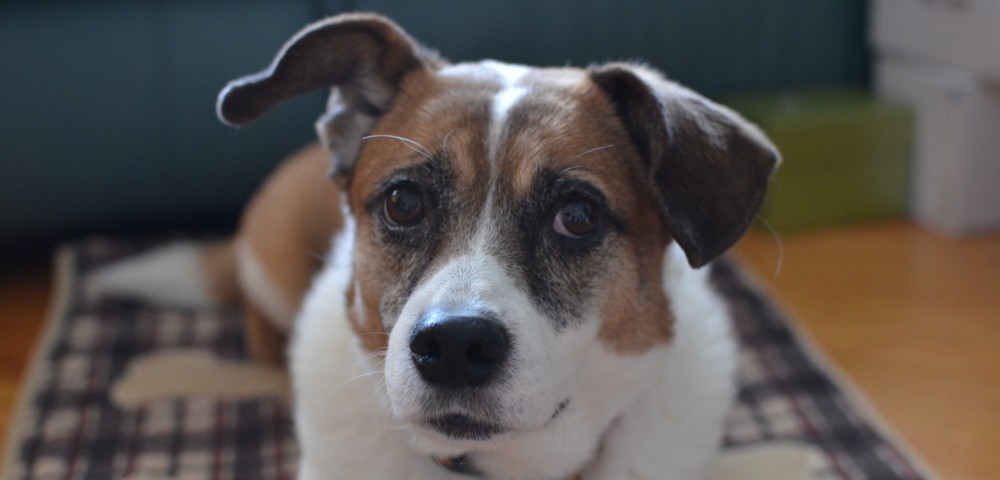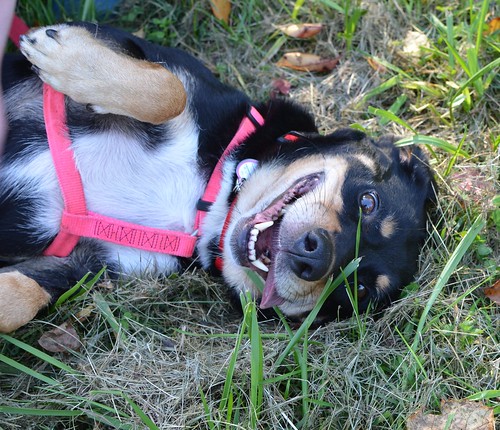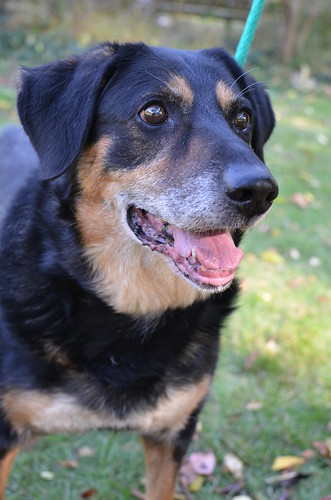You may remember my earlier post about Second Chance Photos, a non-profit that encourages people to donate their time to take personalized photos of animals in need of a forever home. (Check out these amazing before and after photos… you’ll be a convert, I promise.)
 |
| Watching Seth… |
Have you considered taking photos of shelter pets but weren’t sure where to start? You’re in luck. Last week, photographer Seth Casteel (the founder of Second Chance Photos) did a workshop at the Washington Humane Society (WHS) here in D.C. I was able to attend, and I have plenty of tips to share with you.
The workshop took place on Wednesday afternoon at the Washington Humane Society’s New York Avenue location. I had already taken the day off from work to prepare for Thanksgiving… when I learned that Seth would be in town and would be conducting a workshop, I was thrilled!
As I hopped in the car that day, I was a tad concerned about the weather. Although the temperatures reached the low 70s over the weekend, Wednesday was a cold and windy day. I even felt some sprinkles, but nothing was keeping me from that workshop. After dealing with standard D.C. traffic, I arrived at the shelter. I knew I was in the right place when I spotted the gaggle of eager photographers waiting inside. Seth joined us, and our workshop began.
I learned far too much to share in one blog post (I’m wordy enough as it is), but I wanted to share a few highlights. (To see some of the photos I took, click here.)
ACCENTUATE THE POSITIVE
Before the photo session began, Seth did a brief introduction and told us a little bit about his approach to photographing shelter pets. In a nutshell, Seth is a big believer in positive photos. You won’t find any sad, depressing photographs designed to inspire crushing guilt and depression. Instead, Seth aims to take photos that are happy, warm, and welcoming. (I have a feeling Edie from Will My Dog Hate Me – the queen of uplifting adoption videos – would approve of that approach as well. I will admit that I was dying to make a joke about Sarah McLachlan.)
NO PHOTOGRAPHER IS AN ISLAND
I want to stress the importance of teamwork here. At a minimum, you’ll want to have a duo on photo duty – it’s important to have a helper/handler working with the dog while the photographer snaps away. Photographing dogs is not the
sort of activity that lends itself to being solitary. In fact, Seth
noted that three people would be even better. If possible, have a third person responsible for bringing dogs to and from the shooting area – this will minimize waiting time (because you can start shooting the next dog while this person takes the dog you just finished working with back to the kennel) and allow you to photograph more dogs while you’re there. (If I recall correctly, Seth mentioned he could photograph 30 dogs in a few hours – I need to pick up the pace!)
TIPTOE THROUGH THE TULIPS
So, you’ve got your team (be it a duo or a trio) – now what? You’ll need to find a location to take photos. Fortunately, WHS has a nice outdoor area that we were able to use. (No tulips, but I couldn’t get the song out of my head once I thought of it. Seth recommended including some natural elements in your photographs if possible.) There was even bamboo growing in one corner, which provided some greenery to work with. However, if there’s no space like that available at your shelter, scout around… you can probably find a space that will be better than just taking photos in the kennel.
LOOK AT ME
 |
| Not my best… but, that face! |
Once you’ve gotten the logistics (personnel, location, etc.) figured out, then it’s time to actually take some photos! You’ll probably want to take some time to get acquainted with your canine model – the dog may be fidgety or excited and may need some time to relax.
After the pup feels comfortable, how do you get him to look at you? Seth recommended bringing along some treats (checking on each animal’s dietary restrictions, of course) and the squeaker from a squeaky toy (apparently you can order these on Amazon… or, if you live with Bella, she’ll happily remove these from all of her toys for you).
Seth photographed four dogs and walked us through his process. It was really educational – seeing him in action made it easier to envision applying these tips in my own life. (In fact, I employed several on Saturday while taking photos of Bella for our Christmas card.)
TRICKS OF THE TRADE
In addition to the basics I discussed above, Seth shared a plethora of other tips. I wish I could remember them all right now, but I was too busy listening and snapping photos to write everything down. Here’s what really stuck with me:
- Continuous shots are your friend. Set your camera to take multiple photos with each click – this setting will increase your chances of capturing that perfect moment.
- Don’t try to photograph a dog in direct sunlight – the sun right in his face will just make him squint. If possible, use indirect light or position the dog with the sun behind him.
- Resist the urge to use the flash – avoid the dreaded green eye!
- Try to get a nice close-up shot (looking into the camera with a happy face is what we’re hoping for here). While full-body shots are great too, it’s important to get that close-up.
- If the dog looks sad or unhappy, it might be a good idea to let the dog play or run around for a bit if you can. The panting face that follows will likely translate as a happy one in your photographs.
- Embrace Photoshop (or the photo editing software of your choice). Sometimes a few tweaks can take a photo from good to amazing.
- Cats are sometimes a tougher assignment – you may want to experiment to see what works for you here. Consider location, lighting, and trying to highlight each feline’s unique features. (We spent some time in Kitty City as well – I need a lot more practice on that front.)
 You can find many more tips on the Second Chance Photos website, including information about equipment, photo shoots, and – most importantly – how to get started. If you’re interested, there’s also information on upcoming workshops (including Chicago in December and Phoenix in February).
You can find many more tips on the Second Chance Photos website, including information about equipment, photo shoots, and – most importantly – how to get started. If you’re interested, there’s also information on upcoming workshops (including Chicago in December and Phoenix in February).
(While you’re clicking around, pop over to WHS and check out the adoptable animals… perhaps one of them is perfect for you?)
Have you ever taken photos of shelter pets? If not, are you considering giving it a try? Also, if your friendly neighborhood blogger had the chance to interview Seth, what questions would you want her to ask? (Hint, hint… help me out here!)




